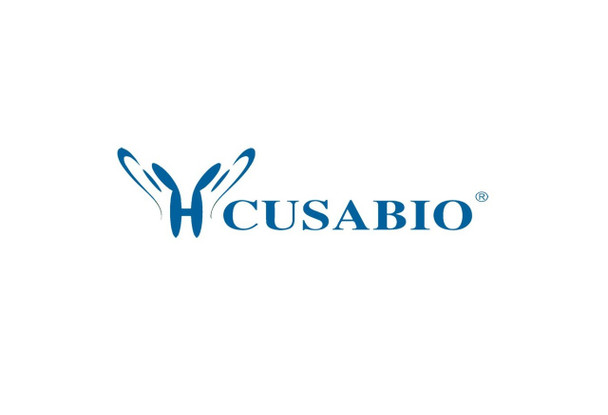Cusabio Human Recombinants
Recombinant Human Tumor necrosis factor ligand superfamily member 11 (TNFSF11), partial | CSB-MP023986HU(F2)b0
- SKU:
- CSB-MP023986HU(F2)b0
- Availability:
- 18 - 28 Working Days
Description
Recombinant Human Tumor necrosis factor ligand superfamily member 11 (TNFSF11), partial | CSB-MP023986HU(F2)b0 | Cusabio
Alternative Name(s): Osteoclast differentiation factor;ODF;Osteoprotegerin ligand;OPGL;Receptor activator of nuclear factor kappa-B ligand;RANKL;TNF-related activation-induced cytokine;TRANCE;CD254
Gene Names: TNFSF11
Research Areas: Cardiovascular
Organism: Homo sapiens (Human)
AA Sequence: GSQHIRAEKAMVDGSWLDLAKRSKLEAQPFAHLTINATDIPSGSHKVSLSSWYHDRGWAKISNMTFSNGKLIVNQDGFYYLYANICFRHHETSGDLATEYLQLMVYVTKTSIKIPSSHTLMKGGSTKYWSGNSEFHFYSINVGGFFKLRSGEEISIEVSNPSLLDPDQDATYFGAFKVRDIDNKLLVPRGSPGSGYIPEAPRDGQAYVRKDGEWVLLSTFLG
Source: Mammalian cell
Tag Info: N-terminal 10xHis-tagged
Expression Region: 63-244aa & linker?NKLLVPRGSPGSGYIPEAPRDGQAYVRKDGEWVLLSTFLG?
Sequence Info: Partial of Isoform2
MW: 27.5 kDa
Purity: Greater than 85% as determined by SDS-PAGE.
Relevance: Cytokine that binds to TNFRSF11B/OPG and to TNFRSF11A/RANK. Osteoclast differentiation and activation factor. Augments the ability of dendritic cells to stimulate naive T-cell proliferation. May be an important regulator of interactions between T-cells and dendritic cells and may play a role in the regulation of the T-cell-dependent immune response. May also play an important role in enhanced bone-resorption in humoral hypercalcemia of malignancy (PubMed:22664871). Induces osteoclastogenesis by activating multiple signaling pathways in osteoclast precursor cells, chief among which is induction of long lasting oscillations in the intracellular concentration of Ca (2+) resulting in the activation of NFATC1, which translocates to the nucleus and induces osteoclast-specific gene transcription to allow differentiation of osteoclasts. During osteoclast differentiation, in a TMEM64 and ATP2A2-dependent manner induces activation of CREB1 and mitochondrial ROS generation necessary for proper osteoclast generation.
Reference: "Crystal structure of human RANKL complexed with its decoy receptor osteoprotegerin." Luan X., Lu Q., Jiang Y., Zhang S., Wang Q., Yuan H., Zhao W., Wang J., Wang X. J. Immunol. 189:245-252(2012)
Storage: The shelf life is related to many factors, storage state, buffer ingredients, storage temperature and the stability of the protein itself. Generally, the shelf life of liquid form is 6 months at -20?/-80?. The shelf life of lyophilized form is 12 months at -20?/-80?.
Notes: Repeated freezing and thawing is not recommended. Store working aliquots at 4? for up to one week.
Function:
Involvement in disease:
Subcellular Location:
Protein Families:
Tissue Specificity:
Paythway:
Form: Liquid or Lyophilized powder
Buffer: If the delivery form is liquid, the default storage buffer is Tris/PBS-based buffer, 5%-50% glycerol. If the delivery form is lyophilized powder, the buffer before lyophilization is Tris/PBS-based buffer, 6% Trehalose, pH 8.0.
Reconstitution: We recommend that this vial be briefly centrifuged prior to opening to bring the contents to the bottom. Please reconstitute protein in deionized sterile water to a concentration of 0.1-1.0 mg/mL.We recommend to add 5-50% of glycerol (final concentration) and aliquot for long-term storage at -20?/-80?. Our default final concentration of glycerol is 50%. Customers could use it as reference.
Uniprot ID: O14788
HGNC Database Link: N/A
UniGene Database Link: N/A
KEGG Database Link: N/A
STRING Database Link: N/A
OMIM Database Link: N/A


b0-SDS__55953.1638526540.jpg?c=1)

b0-SDS__55953.1638526540.jpg?c=1)




